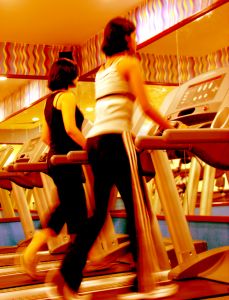 Good news for people who don’t naturally gravitate to doing exercise: less can sometimes mean more in the way of health benefits. A new study has found that just 30 minutes of weekly high-intensity exercise is enough to lower blood sugar levels for 24 hours and help prevent post-meal blood sugar spikes in people with type 2 diabetes.
Good news for people who don’t naturally gravitate to doing exercise: less can sometimes mean more in the way of health benefits. A new study has found that just 30 minutes of weekly high-intensity exercise is enough to lower blood sugar levels for 24 hours and help prevent post-meal blood sugar spikes in people with type 2 diabetes.
“If people are pressed for time – and a lot of people say they don’t have enough time to exercise – our study shows that they can get away with a lower volume of exercise that includes short, intense bursts of activity,” said the study’s senior author, Martin Gibala, professor and chair of the department of kinesiology at McMaster University in Hamilton, Ontario, in Canada.
The current recommendations by the American Diabetes Association are in line with most fitness experts – people with diabetes should get a minimum of 150 minutes of at least moderate exercise each week or about 30 minutes most days of the week. Since people often complain of not having time, the researchers wanted to see if shorter more intense exercise would also do the trick of controlling blood sugar levels.
The study examined eight people with type 2 diabetes, at an average age of 63 years old with a BMI of 32 (considered obese). Here’s what exercise they did over a two week period:
Participants completed six sessions of high-intensity training. They exercised intensely for one minute, then took a minute to rest. This pattern was repeated until they completed 10 minutes of intense exercise. There was also a warm-up and cool-down period during the exercise session, which brought the total time to 25 minutes.
The intense exercise was done at 90 percent of maximum heart rate, which is described by Gibala as “not at an all-out pace, like you’re trying to save your child, but you’ll definitely be out of breath and have trouble talking after a minute.”
Blood sugar levels dropped from 137 milligrams per deciliter (mg/dL) to 119 mg/dL. Blood sugar levels were also reduced after meals long after training sessions were complete.
“If you can only do five to 10 minutes of exercise, that’s better than nothing, but you really start to see the effects of exercise if you can regularly exercise 20 to 30 minutes at least a few times a week,” said Gibala. “Constant training leads to a steady demand for glucose.”
